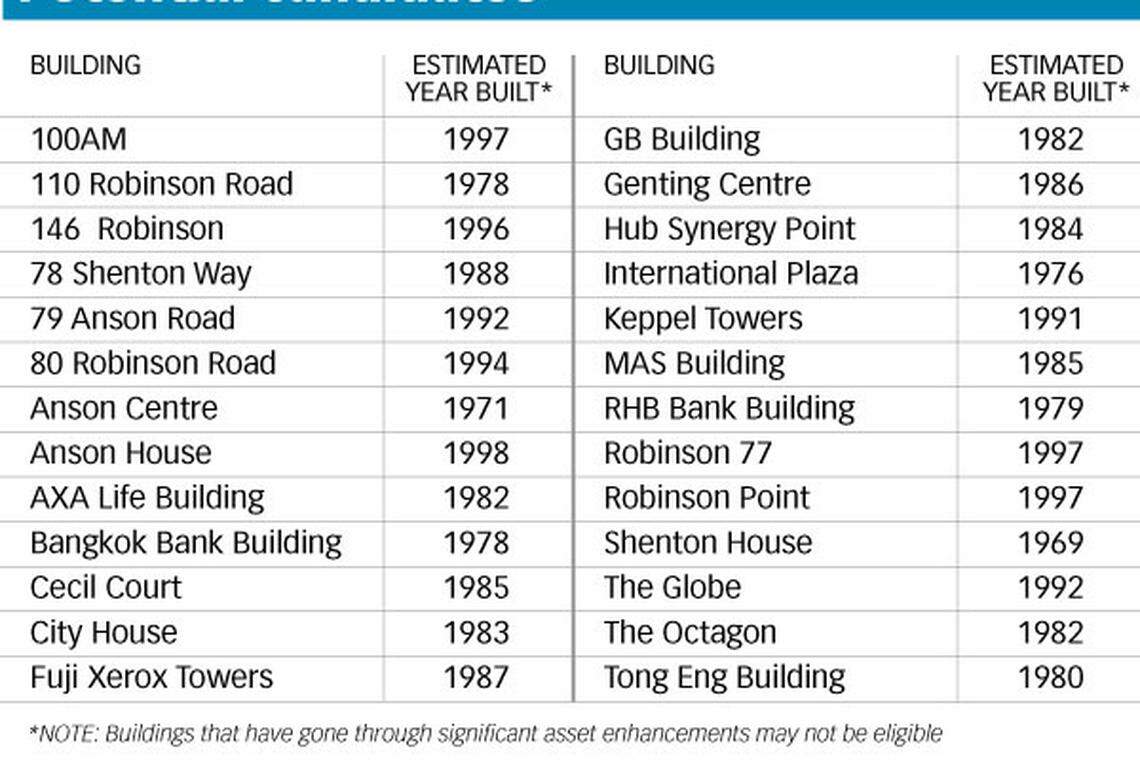New CBD options offer flexibility in medium to long-term
Analysts: Headwinds aside, it offers alternatives for older buildings and could support rentals

Singapore
CITY Developments Limited (CDL) and Hong Leong Holdings are among the property players that could benefit from the government's push to inject greater vibrancy into the central business district (CBD).
The CBD Incentive Scheme, which offers a higher gross plot ratio to pave the way for older CBD office buildings to be converted into hotels, homes or mixed-used projects, makes for greater flexibility in the medium to long term, but owners can choose not to redevelop their existing properties in the near term amid headwinds, analysts say.
CDL's assets, Fuji Xerox Towers and City House, should qualify for the scheme, which is part of the Draft Master Plan 2019.
Hong Leong Holdings, which counts Anson Centre and 80 Robinson Road among its properties, said it welcomes the incentive scheme.
"We will need to review and carry out feasibility studies on how our properties can fit into the URA Master Plan," said its spokesman.
The scheme is targeted at office buildings in certain parts of the CBD - Anson, Cecil Street, Shenton Way, Robinson Road and Tanjong Pagar.
Buildings under 20 years old or which have gone through significant asset enhancements from the last TOP date are excluded from the scheme. Site area is also a qualifying criterion.
The allowable increase in plot ratios is capped at 25 per cent for most proposed land uses and at 30 per cent for residential with commercial use in the first storey in the Anson and Cecil Street areas.

Christine Li, senior director and head of research for Cushman & Wakefield, said: "The new scheme opens up more redevelopment options, especially for non-performing obsolete office stock."
She added that the new scheme gives more flexibility to commercial buildings attempting an en bloc sale. It opens them to a bigger pool of potential buyers - not just commercial landlords, but also residential and hotel developers.
Ms Li noted, however, that last year's hike in additional buyer's stamp duty, as well as the high development charge (DC) rates for conversion to hotels may make developers more cautious about going for residential and hotel developments in the current environment.
Tricia Song, head of research (Singapore) for Colliers International, said owners could be less inclined to take up the scheme if they lack expertise in managing a hotel or in residential development.
They could, however, choose to sell their property to a hotel operator or developer, or even set up a joint venture with a suitable partner.
She also pointed out that office properties typically command steady and predictable income, with rental contracts locked in for two to three years.
"Hotels' rates and occupancies, on the other hand, change on a daily basis and tend to be seasonal and volatile. The owner may also prefer to have a higher amount of recurring income, instead of a substantial one-off income from trading residential properties."
Desmond Sim, head of research (South-east Asia) at CBRE, noted that many of the buildings along Anson Road, Cecil Street and in Tanjong Pagar have small site areas and therefore fall short of the minimum site size. This ranges from 1,000 square metres (sq m) to 2,000 sq m, depending on the location of the site.
Interested parties might thus have to acquire and amalgamate two or more sites in order to take advantage of the scheme, he added.
Mr Sim said real estate investment trusts (Reits) and private equity funds should be key beneficiaries of the scheme, because the potential removal of older CBD offices might further whittle down the near-term supply shortfall.
Meanwhile, OCBC Investment Research analysts, who singled out CDL and the UOL Group as potential beneficiaries, suggested that while conversions may not happen in the near-term amid headwinds in the residential sector, the scheme still offers developers flexibility in the medium-to-long run.
Analysts also said office rents could receive a boost from the potential reduction in office supply in the targeted areas, and displaced occupiers could opt to move out of the CBD in search of more affordable rents.
Over the next seven to 10 years, Cushman & Wakefield expects Grade A office rents to surpass the peak of S$15.40 per square foot per month, last seen in the second quarter of 2008. As of the first quarter of this year, Grade A office rents stood at S$10.61 psf per month.
Ms Li said: "Office rents will receive a further boost if more projects are going for conversion as the Grade A CBD office vacancy rates are only at 2.6 per cent in the first quarter of 2019, a record low since 2007."
DBS Group analysts wrote in a research note: "With the potential reduction in office supply due to conversion into hotels or residential developments and a more vibrant Downtown area, we believe this will be supportive of both Grade A and Grade B CBD office rents.
"However, this would be partially tempered by new office supply in Marina Bay, with shorter land leases which would likely have lower asking rents, and by increased decentralised office supply as the Singapore government focuses on developing various regional hubs."
The analysts singled out Reits with office properties in the CBD as beneficiaries over the medium-term; examples are CapitaLand Commercial Trust, Frasers Commercial Trust, Keppel Reit, OUE Commercial Reit and Suntec Reit.
BT is now on Telegram!
For daily updates on weekdays and specially selected content for the weekend. Subscribe to t.me/BizTimes
Property
URA awards Zion Road, Upper Thomson sites to sole bidders at lower-than-expected offers
Dubai’s high-end property sales rise on overseas demand
China national who had Singaporeans front ‘East Coast plan’ to buy houses pleads guilty
URA launches tender for GLS sites at Canberra Crescent, De Souza Avenue
PwC denies anonymous letter allegations, plans investigation
China home prices fall as slump shows few signs of abating
